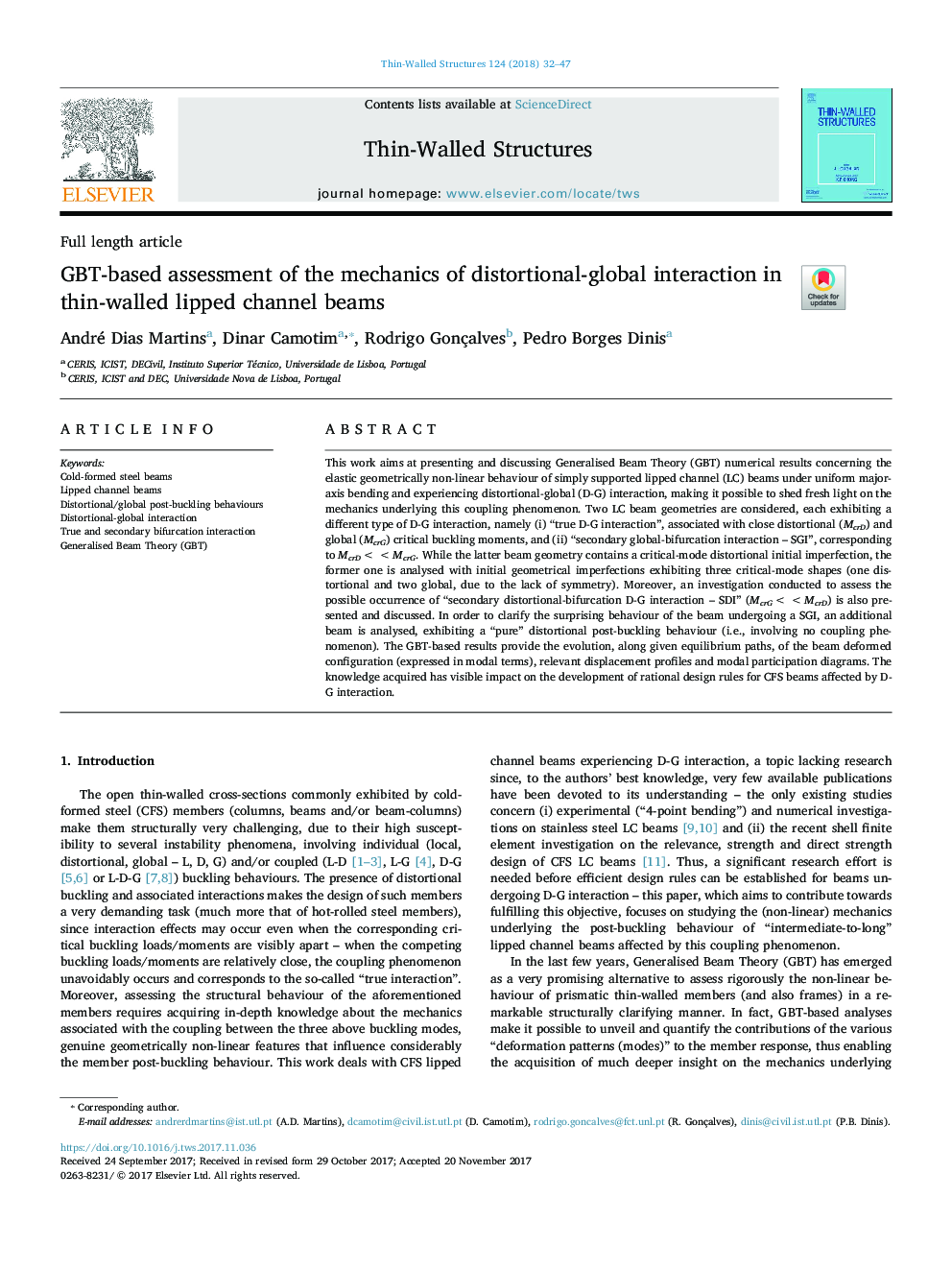| Article ID | Journal | Published Year | Pages | File Type |
|---|---|---|---|---|
| 6778165 | Thin-Walled Structures | 2018 | 16 Pages |
Abstract
This work aims at presenting and discussing Generalised Beam Theory (GBT) numerical results concerning the elastic geometrically non-linear behaviour of simply supported lipped channel (LC) beams under uniform major-axis bending and experiencing distortional-global (D-G) interaction, making it possible to shed fresh light on the mechanics underlying this coupling phenomenon. Two LC beam geometries are considered, each exhibiting a different type of D-G interaction, namely (i) “true D-G interaction”, associated with close distortional (McrD) and global (McrG) critical buckling moments, and (ii) “secondary global-bifurcation interaction - SGI”, corresponding to McrD << McrG. While the latter beam geometry contains a critical-mode distortional initial imperfection, the former one is analysed with initial geometrical imperfections exhibiting three critical-mode shapes (one distortional and two global, due to the lack of symmetry). Moreover, an investigation conducted to assess the possible occurrence of “secondary distortional-bifurcation D-G interaction - SDI” (McrG << McrD) is also presented and discussed. In order to clarify the surprising behaviour of the beam undergoing a SGI, an additional beam is analysed, exhibiting a “pure” distortional post-buckling behaviour (i.e., involving no coupling phenomenon). The GBT-based results provide the evolution, along given equilibrium paths, of the beam deformed configuration (expressed in modal terms), relevant displacement profiles and modal participation diagrams. The knowledge acquired has visible impact on the development of rational design rules for CFS beams affected by D-G interaction.
Related Topics
Physical Sciences and Engineering
Engineering
Civil and Structural Engineering
Authors
André Dias Martins, Dinar Camotim, Rodrigo Gonçalves, Pedro Borges Dinis,
